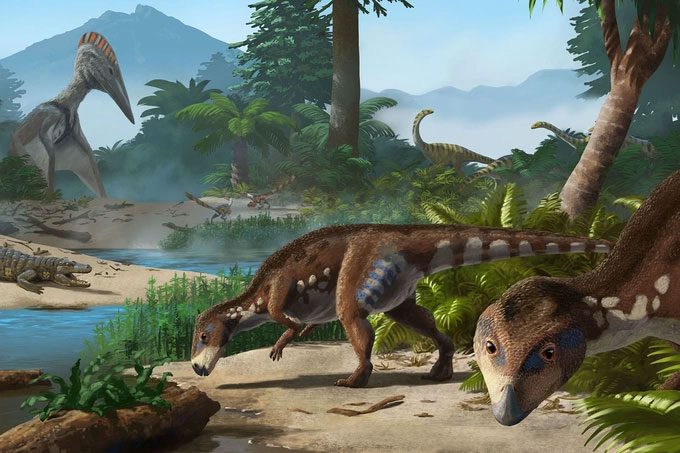A newly discovered dwarf dinosaur proves the “island rule,” which states that animals evolving on islands tend to be smaller than their mainland counterparts.
When you think of Transylvania, you might picture a world of vampires and werewolves. Now, you can add to that list a species of “dwarf dinosaur.” A team of researchers has recently discovered a new dinosaur species that once lived in this region, naming it the “Transylvanian flat-headed reptile.” This dinosaur belongs to the dwarf dinosaur group, and instead of evolving to become larger like its relatives on the mainland, this dwarf dinosaur evolved to be smaller.

Fossil evidence shows that during the Late Cretaceous, dwarf dinosaurs lived on a tropical archipelago near present-day Romania.
The Transylvanian dwarf dinosaur belonged to the herbivorous theropod family and lived approximately 70 million years ago at the end of the Cretaceous period. At that time, flowering plants had evolved, along with the first pollinators, and the distant ancestors of modern birds were beginning to take flight. The massive supercontinent Pangaea was breaking apart into smaller continents, with Europe being an archipelago of tropical islands, similar to present-day Indonesia.
A study recently published in the journal “Vertebrate Paleontology” describes a new animal discovered from fragments of frontal bones and the lower part of the skull. This Transylvanian dwarf dinosaur measured only 2 meters in length. It had a flat, wide head and coexisted with other reptiles such as crocodiles and turtles.
Previous research suggested that dinosaur diversity significantly declined during this period in Earth’s history, just before the mass extinction event that ended the Cretaceous. However, the recent discovery indicates that dinosaur diversity still existed in Europe during the Cretaceous.
The lead author of the study, PhD candidate Felix Augustin from the University of Tuebingen in Germany, stated: “With each new species discovered, we are debunking the common assumption that the fauna in Europe at the end of the Cretaceous had low diversity.”

Some skull fragments of the Transylvanian dinosaur. (Photo: Dylan Bastiaans).
The small size of this dinosaur makes it the latest member of the dwarf dinosaur family found in the Hateg region of Romania, which was once part of Transylvania. The dwarf dinosaurs of Hateg are a renowned group that has attracted paleontologists since their discovery in the early 20th century. In 2010, another research group determined that by the end of the Cretaceous, an island covering about 80,000 km2 in Hateg was home to these dwarf dinosaurs.
Islands often give rise to smaller-than-normal species. Today, there are dwarf lemurs on an island in northern Madagascar and dwarf foxes living in the Channel Islands of California. Ten thousand years ago, dwarf elephants and dwarf hippos also inhabited islands in the Mediterranean. In a study published in 2021, scientists analyzed thousands of reports on body size changes in over 1,000 species and found that “the island rule” often holds true: over many generations, larger animals tend to become smaller when isolated on an island.
Several hypotheses explain why island animals tend to shrink. According to evolutionary anthropologist Caitlin Schrein, the absence of large predators may have led island animals to become smaller. Limited food sources on islands compared to the mainland can slow the growth of some species. And without large predators on the island, smaller animals are less likely to be eliminated from the population.
By the end of the Cretaceous, the Rhabdodontidae, a family of small to medium-sized herbivorous theropods, were the most common dinosaurs in what is now Europe. In the new study, scientists note that relatives of the Transylvanian dwarf dinosaur have been found in present-day France, which may have once been an independent island. As archipelagos formed and sea levels fluctuated, natural land bridges could have connected the islands, allowing dinosaurs to migrate and evolve completely separately from one another.
According to researcher Augustin, they may have even migrated between islands by swimming short distances. He stated: “Dinosaurs had strong legs and tails, especially the reptiles that are naturally good swimmers.”

















































